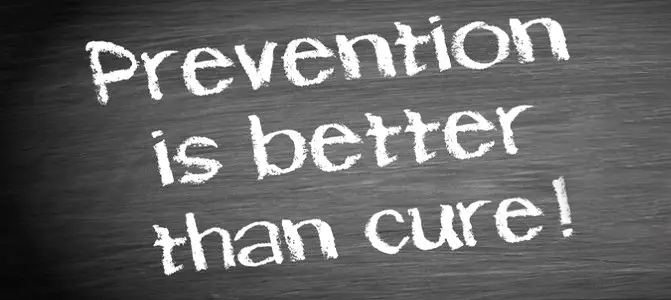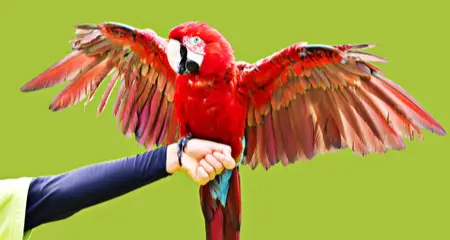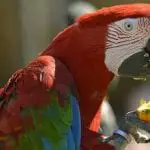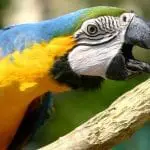A parrots’ toe is an integral part of their lives. There is no question about it as it has tons of uses. With that in mind, it is clear that if anything happens to it, their daily activities are paralyzed.
Why wouldn’t it be? The use of a parrot’s feet and toes are not limited to standing. They use it to grasp things, eat, walk, and climb. What do you think will happen to a bird with an injured toe? I don’t even want to imagine it as it can be disastrous.
Aside from a parrot’s beak, their feet, in general, are something that needs extra care. Unfortunately, there are cases when injuries arise. Sometimes due to some accidents, but trust me when I say that in most cases, it could have been avoidable.
Having an enigmatic pet like a parrot is a wonderful thing. As pet owners, we do not wish any harm to come their way. How many of you have dealt with a parrot’s toe injury? I would say a lot as it is one of the common problems that can arise. Seeing your pets suffer does not feel good.
How many times have we heard the saying prevention is better than cure? You must have heard it a million times. It is the same case for your friendly birds. If you want to know what are the things that you can do to prevent a toe injury for these little pets, this topic is for you.
Preventing the cause

Before you think of any treatment, it is always best to stop bad things from happening. If you have kids, remember those times when you have to baby proof the entire house? A similar practice should exist when taking care of your parrots.
Here are the things you can do to prevent toe injuries for your parrots.
Grooming
Parrots don’t usually suffer from overgrown nails. But it doesn’t mean they don’t need regular grooming. Keep in mind that a parrot’s toenails can be sharp and pointy. If it is left unattended, it can be hitched into something that can cause bleeding and injury.
Don’t worry because getting their feet groomed will not take up too much time. A little nail filing could do the trick and save you from worries. So, make sure to check their toes regularly.
Vitamin Boost
A bird that is suffering from vitamin A deficiency is likely to have feet and toe problems. It plays a major role in keeping the parrot’s skin healthy. There are signs that you can easily notice if your pet is vitamin A deficient. The legs and feet would have dry skin.
If you noticed that your bird has rough and flaky scales on their skin, consult a veterinarian. They will tell you what to do to combat the deficiency. You need to act fast. These symptoms can irritate their skin and lead to a series of infections.
Shelter Proofing
The personal space given to your pets should be safe from hazardous materials. Parrots are prone to having frostbites. They don’t need to be in an open icy area to get one. Even metal perches can give them frostbites.
There are cases when your parrots are housed outdoors. This can be dangerous as they can pick up frostbite quickly. Make sure that they have protection from the cold. A simple cloth can do as it can block chilly winds.
Proper Diet
Parrots are one of the most spoiled pets out there. Owners tend to give them food and treats more than what they should eat. As a result, our little pets become overweight. You must understand that the heavier they are, the more pressure it is on the feet.
If the birds are overweight, they are at risk of losing their balance and cause slipping. Overfeeding doesn’t mean we love them too much. If we care about our pets, giving them a healthy diet is the best way to show it.
Keep them active
Exercising daily is a good practice not just for humans but birds as well. Don’t keep your parrot in a cage with nothing to do. Parrots are active kinds of birds. They need daily activities that can strengthen and maintain their feet.
Don’t worry. They are not like dogs that need daily walks. It should not be hard as parrots are naturally curious and playful. Providing them with some toys and swings inside their cage should keep them moving.
Things to avoid
For the safety of your feathered friends, take note of these things that you need to avoid. These are useful, but unfortunately, a lot of pet owners neglect to do. Check it out and act on it quickly.
DON’T provide you parrots perches that have similar width, size, and length. Getting a super small perch is also not an option. Parrots won’t get a good grip at it. They can slip into an accident.
DON’T just offer one kind of food. Remember that birds need balanced nutrition to strive. Giving them too much food doesn’t guarantee their wellness. Keep them healthy, and it will show on their physical attributes.
DON’T overdo nail clipping and grinding. If you let their nails bleed, it is susceptible to infection. If you cut it too short, they will suffer from a poor grip.
DON’T touch your birds casually without washing. For smokers, you better make it a habit to wash hands before petting the birds. Even non-smokers should do the same. We are all exposed to a variety of toxins that are harmful to birds. The contamination usually occurs from hand to feet contact.
First Aid

Accidents can happen, and no one knows when it will occur. It is best to keep a first aid kit for your little pets. If there are minor injuries, you can immediately tend to it. Here are the things you need to prepare.
- Nail File – This is an essential tool helpful to your pets. Though their nails are not known for excess growth, the pointy part can cause discomfort. The birds can get hurt if their nails are caught somewhere. Also, even the owners can get scratches if it will be left unattended.
- Flour – You read that right. Flour should be included in your first aid kit. Sometimes, feet wounds occur to our little friends. This can be triggered by a lot of things. If you have flour ready, place it on a box. Let your pets walk on it as it helps to stop the bleeding.
- Hemostat – It is a medical tool, also known as forceps. It looks like tweezers but with a little grit. This is very helpful when you need to hold on to something small.
- Scissors – This tool is used for trimming broken feathers. But it is not recommended that you do it alone. If you cut it the wrong way, it can lead to excessive bleeding. I suggest you leave this part for the experts.
- Toothpick – Do not belittle this tiny item. It is the best thing to use if you want to remove something from a parrot’s nostrils. There are instances that food got stuck, and since it has tiny holes, a toothpick is the best option.
- Cotton Swabs – Like normal first aid kits, a cotton swab is also needed for your pets. In the case of bleeding, it can be used to control the bleeding.
- Disinfectant – It is used for cleaning open wounds. You can also use hydrogen peroxide as it is also safe to use. But you have to make sure that it is kept away from mouth, eyes, and ears.
- Syringe – Don’t worry because you are not going to inject your birds. If you remove the needle from the syringe, there are a lot of uses for it. You can fill it with water and flush it on the wound. For a bird with no appetite, it can be used for feeding too.
- Phone Numbers – Write down a copy of your veterinarians’ number. Don’t forget to put an alternative doctor. Research and take note of the nearest animal clinic in your area. This way, it will be easy to take your pet in case of an emergency.
Conclusion
Now that you are aware of how to prevent toe injuries, treating minor ones should not be a problem. However, check for the degree of the injury. Do not play doctor if it requires serious medical attention. Immediately take them to the nearest animal clinic to avoid complications.



